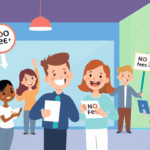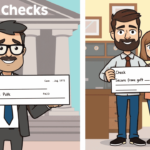In today’s digital age, check fraud remains surprisingly prevalent despite the rise of electronic payments. According to recent FBI reports, Americans lose over $1 billion annually to check fraud schemes, making it a serious threat to your financial security. Whether you still write checks regularly or only occasionally, understanding how to protect yourself from check fraud is essential knowledge. Fraudsters continually develop sophisticated methods to compromise checks, from washing and altering to creating convincing counterfeits. The good news? With the right preventative measures, you can significantly reduce your risk of becoming a victim. This guide explores practical, expert-backed strategies to safeguard your finances against check fraud attempts.
What Makes Check Fraud So Common?
Despite declining check usage overall, check fraud continues to thrive for several reasons. First, checks contain all the sensitive information a criminal needs: your name, address, account number, routing number, and signature. Second, many people still use outdated check security practices. Finally, check processing systems, while improved, still have vulnerabilities that skilled fraudsters can exploit.
7 Essential Strategies to Prevent Check Fraud
1. Use High-Security Checks
Standard checks from your bank might not offer adequate protection. Consider investing in high-security checks that include:
- Watermarks visible when held to light
- Microprinting that becomes blurry when photocopied
- Chemical-reactive paper that reveals tampering attempts
- Thermochromic ink that changes color with temperature
- Holographic foil strips that can’t be duplicated
These features make it significantly harder for criminals to alter or reproduce your checks. While they cost slightly more, the security benefits far outweigh the additional expense.
2. Store Checks and Financial Documents Securely
Many check fraud cases begin with theft of physical checks. Protect yours by:
- Storing unused checks in a locked drawer or safe
- Never leaving checkbooks in your car
- Shredding (not just tossing) canceled checks and bank statements
- Being especially cautious with your first few checks in a new checkbook, as they’re often targeted
Remember that a stolen blank check is like handing over a signed withdrawal slip for your account.
3. Practice Proper Check Writing Habits
How you write checks matters tremendously for security:
- Use gel pens with pigmented ink that penetrates the paper and can’t be washed off
- Fill all spaces completely when writing dollar amounts (example: writing $100.00 as “One hundred dollars and 00/100————”)
- Draw a line through unused spaces on the payee and amount lines
- Never sign blank checks
- Write checks with consistent pressure to make forgery detection easier
These simple habits create checks that are much more difficult to alter successfully.
4. Embrace Electronic Alternatives When Possible
The most secure check is one you never write. Consider:
- Setting up direct deposit for regular income
- Using online bill pay through your bank’s secure portal
- Adopting person-to-person payment apps for personal transactions
- Setting up automatic payments for recurring bills
When electronic alternatives aren’t available, consider using a cashier’s check or money order for large or important payments, as they offer better protection than personal checks.
5. Monitor Your Accounts Vigilantly
Early detection is crucial for minimizing damage from check fraud:
- Review account activity weekly, not just when statements arrive
- Set up banking alerts for large transactions
- Reconcile your checkbook regularly, tracking every check you write
- Report any discrepancies to your bank immediately
Many banks now offer real-time notification systems that alert you to check clearing, making monitoring significantly easier.
6. Understand Your Bank’s Check Security Features
Modern banks employ numerous security measures to protect against check fraud:
- Positive pay systems that match checks against authorized lists
- Image analysis technology that compares check signatures
- Automated clearing house (ACH) blocks that prevent unauthorized electronic conversions
Contact your bank to learn which security features they offer and how to opt into additional protections.
7. Know What to Do If You Become a Victim
Despite precautions, fraud can still occur. If you suspect check fraud:
- Contact your bank’s fraud department immediately
- File a police report
- Place alerts on your credit reports with all three bureaus
- Document all communications regarding the fraud
- Follow up with written correspondence to your bank
Quick action often determines whether you’ll recover stolen funds. Most banks have time limits for reporting fraud, typically 30-60 days from your statement date.
Frequently Asked Questions About Check Fraud
How long should I keep canceled checks?
Financial experts recommend keeping tax-related checks for seven years and other important checks (major purchases, home improvements, etc.) permanently. Routine checks can be shredded after one year.
Can check fraud affect my credit score?
Yes, if fraud leads to overdrafts or unpaid accounts. This is why monitoring and rapid response are crucial.
Is it safer to use “For Deposit Only” on checks?
Absolutely. This restrictive endorsement helps prevent checks from being cashed if stolen. It’s particularly important when mailing checks.
Conclusion
While check fraud remains a persistent threat, implementing these seven strategies creates multiple layers of protection for your financial security. The most effective approach combines physical security measures, careful check-writing practices, account monitoring, and prompt action if suspicious activity occurs. Remember that your vigilance is the most powerful deterrent against check fraud. By staying informed about the latest security measures and consistently applying these protective strategies, you can significantly reduce your vulnerability to check fraud and ensure your financial information remains secure.










